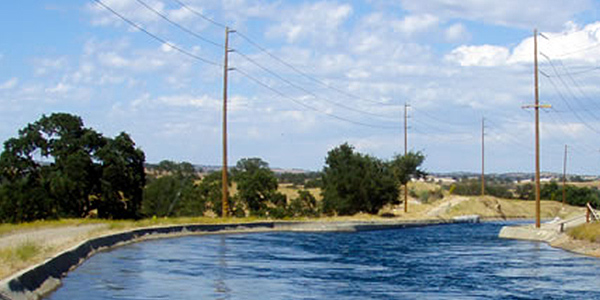By Hudson Sangree
FERC on March 20 rejected Pacific Gas & Electric’s request to rehear a case in which the commission ruled that interconnection customers could be harmed by changes occurring outside of their boundaries (EL15-55–003).
The case began in 2015 when the Modesto Irrigation District and the Turlock Irrigation District claimed PG&E had denied the districts’ rights under interconnection agreements to the PG&E-owned section of the California-Oregon Transmission Project, a 340-mile, 500-KV line that runs from southern Oregon to Central California.
The districts, which supply power to large areas of California’s Central Valley, are members of the Transmission Agency of Northern California and hold shares in TANC’s entitlement to capacity on the project. They use those entitlements to transfer energy from the Pacific Northwest.
The districts’ interconnection agreements with PG&E provide that either party can request a joint study of any proposed “modification, new facility addition, or long-term change to operations that may reasonably be expected to result in an adverse impact.”
“If an adverse impact is identified through either study process [the interconnection agreements impose] the obligation on the primary party to avoid, fully mitigate or compensate the coordinating party for all costs incurred due to the adverse impact,” FERC said.
The California Department of Water Resources (DWR), which owns generation and pumping resources connected to the transmission project, had been part of a remedial action scheme to maintain reliable operations during disruptions. When DWR dropped out in March 2015, PG&E “reprogrammed” the scheme but didn’t notify the irrigation districts and then refused to conduct a study of the potential impacts.
The districts sought FERC intervention. The commission initially denied the districts’ complaint, finding that the relevant terms of the interconnection agreements did not apply to resources beyond their immediate control.
“The districts do not own or control any portion of the California-Oregon Transmission Project [and it cannot] be considered part of the districts’ systems as defined in the interconnection agreements,” FERC wrote.
The districts appealed to the 9th U.S. Circuit Court of Appeals, which decided in September 2018 that FERC had read the agreements too narrowly in “concluding that an adverse impact must be a direct, physical effect on a line or component inside the districts’ systems and did not include a physical effect on a line or component outside the districts’ systems that makes it more difficult for the districts to transfer power into their systems.”
On remand, FERC ruled in favor of the districts and ordered PG&E to conduct a study of potential adverse impacts.
PG&E sought a rehearing, claiming that it had not breached its interconnection agreements and that no adverse impact had occurred. It said the 9th Circuit and the commission misread the interconnection agreements.
FERC rejected all of PG&E’s arguments.
“Although PG&E asserts that the commission ignored the plain meaning of the interconnection agreements, PG&E essentially focuses on whether PG&E, in its own estimation, believed that it was not making a long-term change to operations on its system that may reasonably result in an adverse impact to the districts’ systems.
“However, the commission in the remand order found that PG&E breached the interconnection agreements by failing to undertake a study … which considers the perspective of the coordinating party, here, the districts.”
“Equally unavailing,” FERC said, “is PG&E’s assertion that the term ‘adverse impact’ under the interconnection agreements was not intended to cover changes occurring outside the districts’ systems. As an initial matter, the Ninth Circuit already ruled that adverse impacts should not be so narrowly construed. From a technical perspective, the districts’ ability to transfer power into their systems may be affected by changes occurring outside of their boundaries, and this specific scenario could result from PG&E’s re-programming of its remedial action scheme … PG&E must participate in a study to assess the potential adverse impacts to the districts’ systems.”




